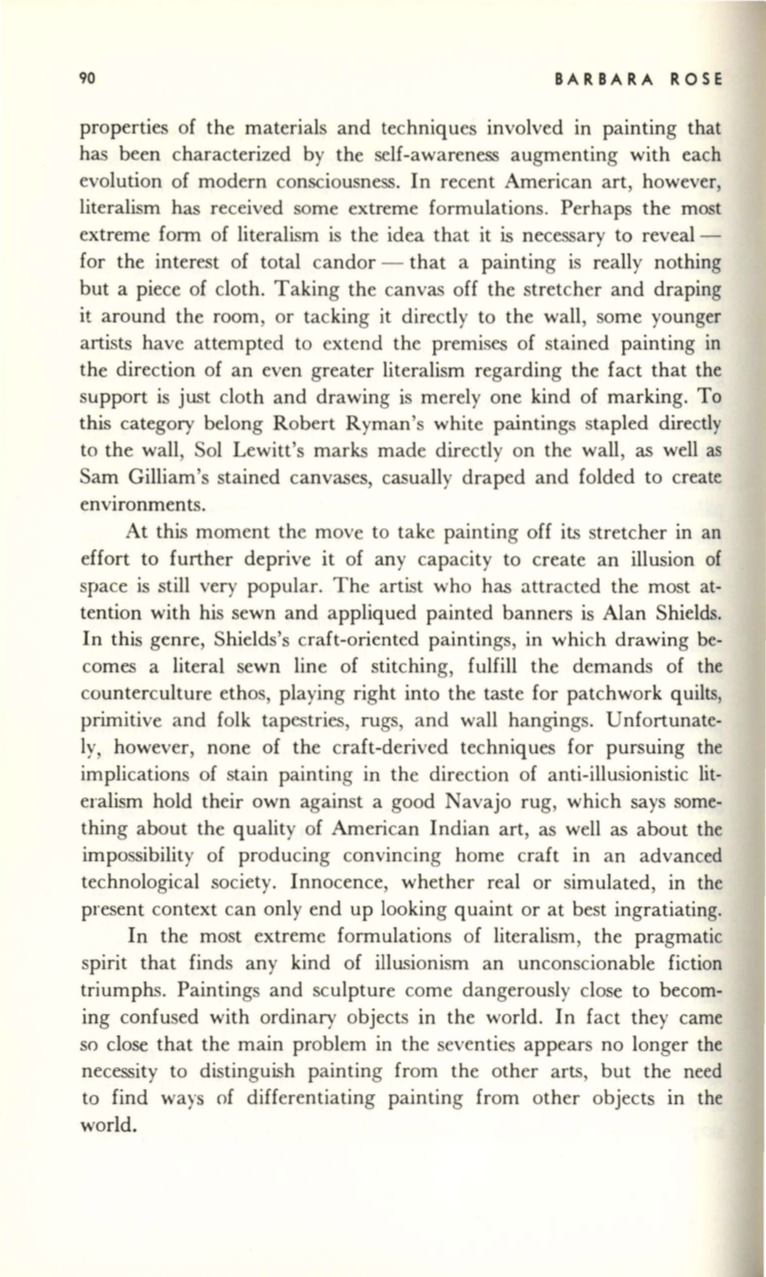
90
BARBARA ROSE
properties of the materials and techniques involved in painting that
has been characterized by the self-awareness augmenting with each
evolution of modern consciousness. In recent American art, however,
literalism has received some extreme formulations . Perhaps the most
extreme fonn of literalism is the idea that it
is
necessary to reveal–
for the interest of total candor - that a painting is really nothing
but a piece of cloth. Taking the canvas off the stretcher and draping
it around the room, or tacking it directly to the wall, some younger
artists have attempted to extend the premises of stained painting in
the direction of an even greater literalism regarding the fact that the
support is just cloth and drawing is merely one kind of marking. To
this category belong Robert Ryman's white paintings stapled directly
to the wall, Sol Lewitt's marks made directly on the wall, as well as
Sam Gilliam's stained canvases, casually draped and folded to create
environments.
At this moment the move to take painting off its stretcher in an
effort to further deprive it of any capacity to create an illusion of
space is still very popular. The artist who has attracted the most at–
tention with his sewn and appliqued painted banners is Alan Shields.
In this genre, Shields's craft-oriented paintings, in which drawing be–
comes a literal sewn line of stitching, fulfill the demands of the
counterculture ethos, playing right into the taste for patchwork quilts,
primitive and folk tapestries, rugs, and wall hangings. Unfortunate–
ly, however, none of the craft-derived techniques for pursuing the
implications of stain painting in the direction of anti-illusionistic lit–
eralism hold their own against a good Navajo rug, which says some–
thing about the quality of American Indian art, as well as about the
impossibility of producing convincing home craft in an advanced
technological society. Innocence, whether real or simulated, in the
present context can only end up looking quaint or at best ingratiating.
In the most extreme formulations of literalism, the pragmatic
spirit that finds any kind of illusionism an unconscionable fiction
triumphs. Paintings and sculpture come dangerously close to becom–
ing confused with ordinary objects in the world. In fact they came
so close that the main problem in the seventies appears no longer the
necessity to distinguish painting from the other arts, but the need
to find ways of differentiating painting from other objects in the
world.


